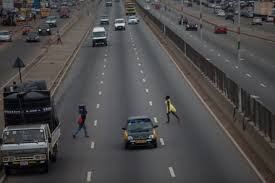Driver Behaviour is a vital element in ensuring road safety. It greatly affects the likelihood of accidents, particularly in the Northern Region. Understanding how the choices and actions of drivers contribute to road incidents is essential for fostering safer driving environments.
In this blog post, we will delve into the various dimensions of driver behaviour. To begin with, we will examine common risky practices that drivers often engage in, such as tailgating and using mobile devices while driving. These actions can lead to dangerous situations, and by recognizing them, we can take steps to mitigate their impact.
Furthermore, we will discuss the importance of good driving habits and how they can be cultivated. Awareness and education are key components in promoting a culture of responsible driving. By sharing informative resources and practical advice, we aim to empower drivers to make better choices behind the wheel.
In addition, we will highlight the role of community initiatives in encouraging safer driving behaviours. Local programs and campaigns can significantly influence driver attitudes and practices, ultimately leading to a more secure road environment.

Join us as we explore the intricate relationship between driver behaviour and road safety in the Northern Region. Together, we can work towards creating a safer community for all road users.
Common Risky Driver Behaviours
Many drivers engage in risky practices that can lead to dangerous situations. Recognizing these behaviours is the first step toward reducing this occurrence. Some of the most prevalent risky behaviours include:
- Distracted Driving:
One of the leading causes of accidents, distracted driving occurs when drivers divert their attention away from the road. This can include using mobile devices for texting, making calls, or browsing social media. Even a momentary distraction can have serious consequences.
- Speeding:
Many drivers exceed speed limits, believing they can save time. However, speeding reduces the time available to react to unexpected events, such as pedestrians crossing the road or sudden stops by other vehicles. This behaviour not only increases the likelihood of accidents but can also exacerbate the severity of collisions.
- Tailgating:
Following too closely can lead to rear-end collisions, especially if the vehicle in front suddenly stops. Tailgating reflects impatience and can create a high-stress environment for all drivers involved. Drivers need to maintain a safe distance to allow for adequate reaction time.
The Importance of Good Driving Habits
Cultivating good driving habits is vital for improving road safety. By focusing on responsible behaviours, we can create a safer environment for all road users. Here are some strategies to help promote good driving habits:
- Education and Awareness:
Providing drivers with information about the consequences of risky behaviours can encourage safer practices. Schools, workplaces, and community organizations can play a significant role in educating drivers about the importance of safe driving. Workshops, seminars, and informational campaigns can foster a culture of awareness.
- Community Initiatives:
Local programs and campaigns can effectively influence driver attitudes and promote responsible driving. Engaging local law enforcement, schools, and businesses in collaborative efforts can amplify the message of safe driving. Initiatives such as “Safe Driving Days” or “Traffic Safety Weeks” can create a community-wide commitment to road safety.
Practical Tips
Sharing actionable advice is essential in empowering drivers to make better choices. Here are a few practical tips that can make a significant difference:
- Maintain a Safe Following Distance:
The general rule is to keep at least a three-second gap between your vehicle and the one in front of you. This distance allows for adequate reaction time in case of sudden stops.
- Avoid Distractions:
Set your GPS, adjust your mirrors, and complete any necessary tasks before starting your drive. If you must use your phone, pull over safely to do so.
- Plan Your Route:
Familiarize yourself with your route ahead of time to reduce the need for last-minute changes, which can lead to risky behaviour.
The Role of Technology in Promoting Safe Driving
In recent years, technology has emerged as a valuable ally in promoting safe driving behaviours. Various applications and devices can assist drivers in making better choices on the road. For example:
1. Mobile Apps:
There are numerous apps designed to help drivers avoid distractions. These apps can silence notifications or send automatic replies while driving, allowing users to focus on the road.
2. In-Car Technology:
Many modern vehicles come equipped with features that promote safe driving. Lane departure warnings, adaptive cruise control, and blind-spot monitoring are just a few examples of how technology can enhance road safety.
3. Telematics:
Fleet management companies often use telematics to monitor driver behaviour. By analyzing data on speed, braking patterns, and overall driving habits, they can provide feedback and coaching to improve safety.
READ ALSO: Road Safety in Northern Ghana: 3 Key Challenges Uncovered